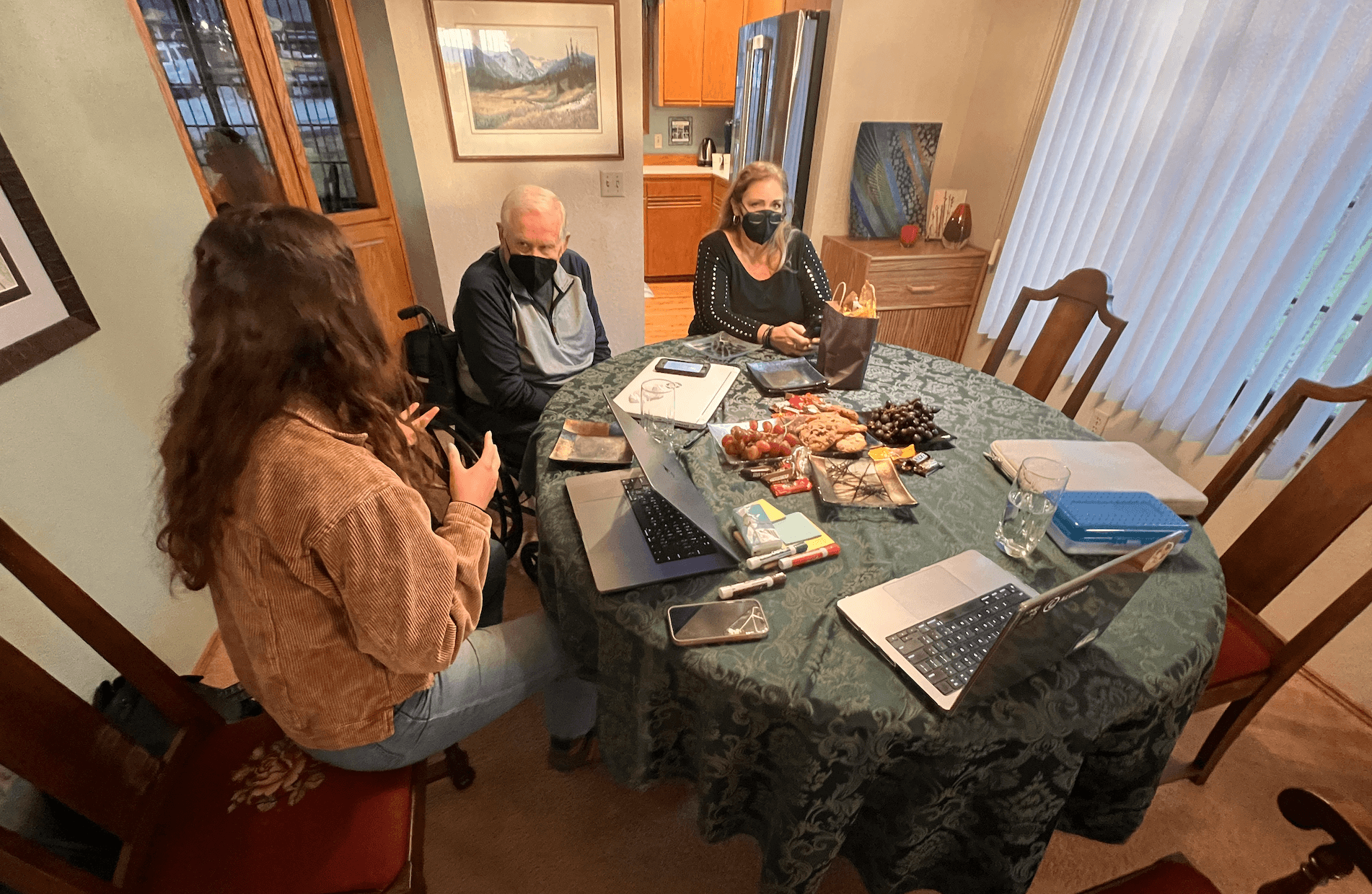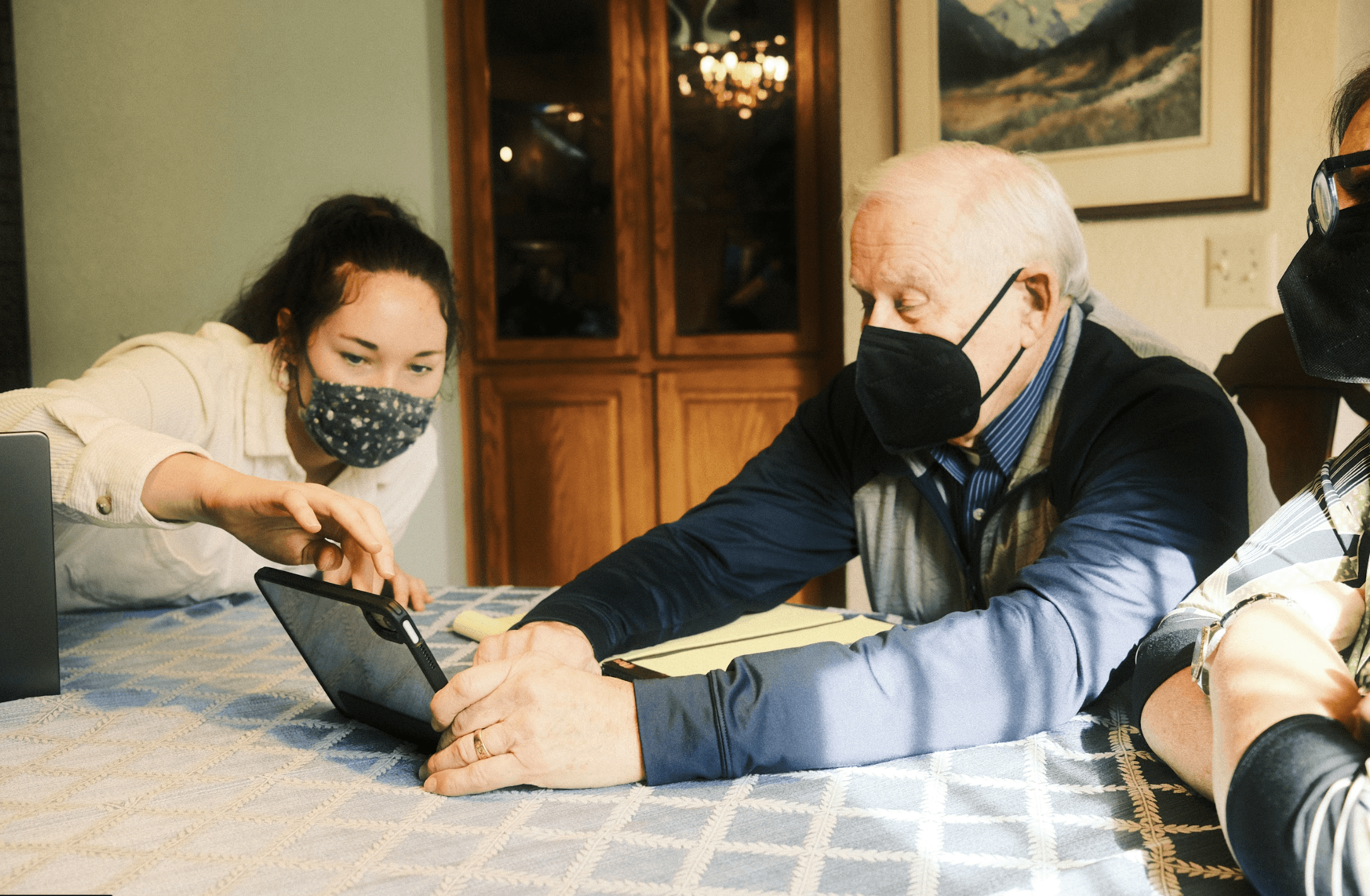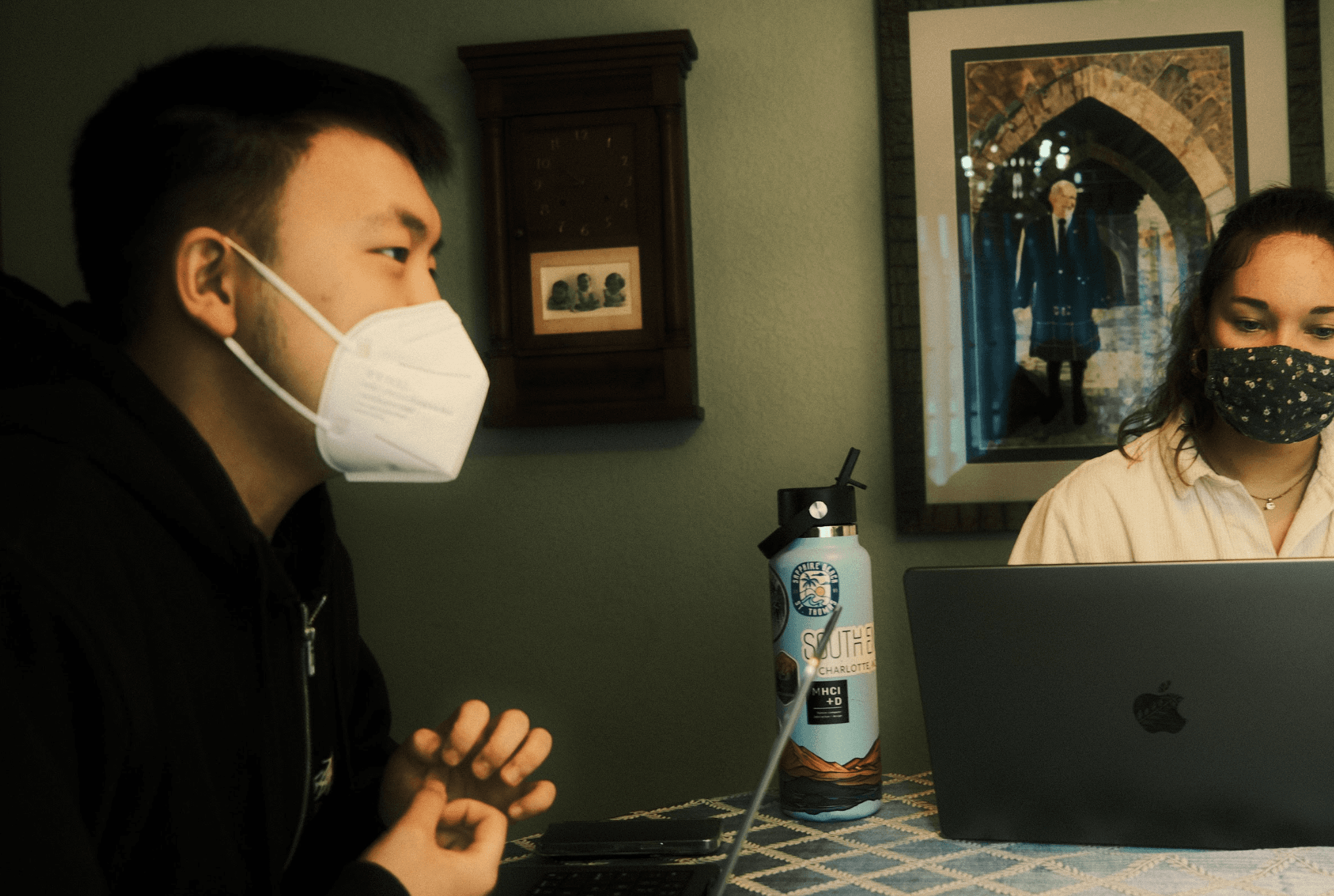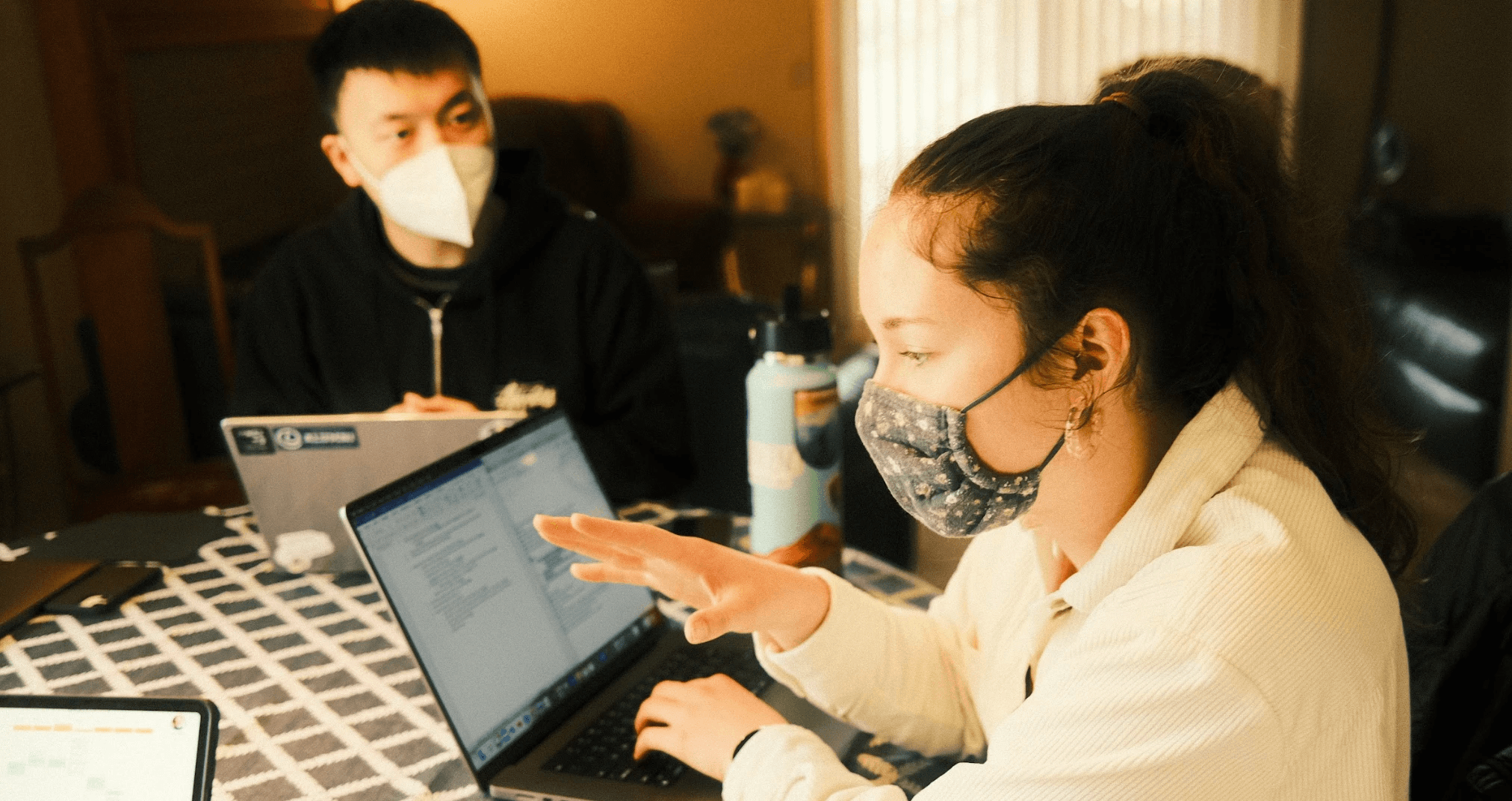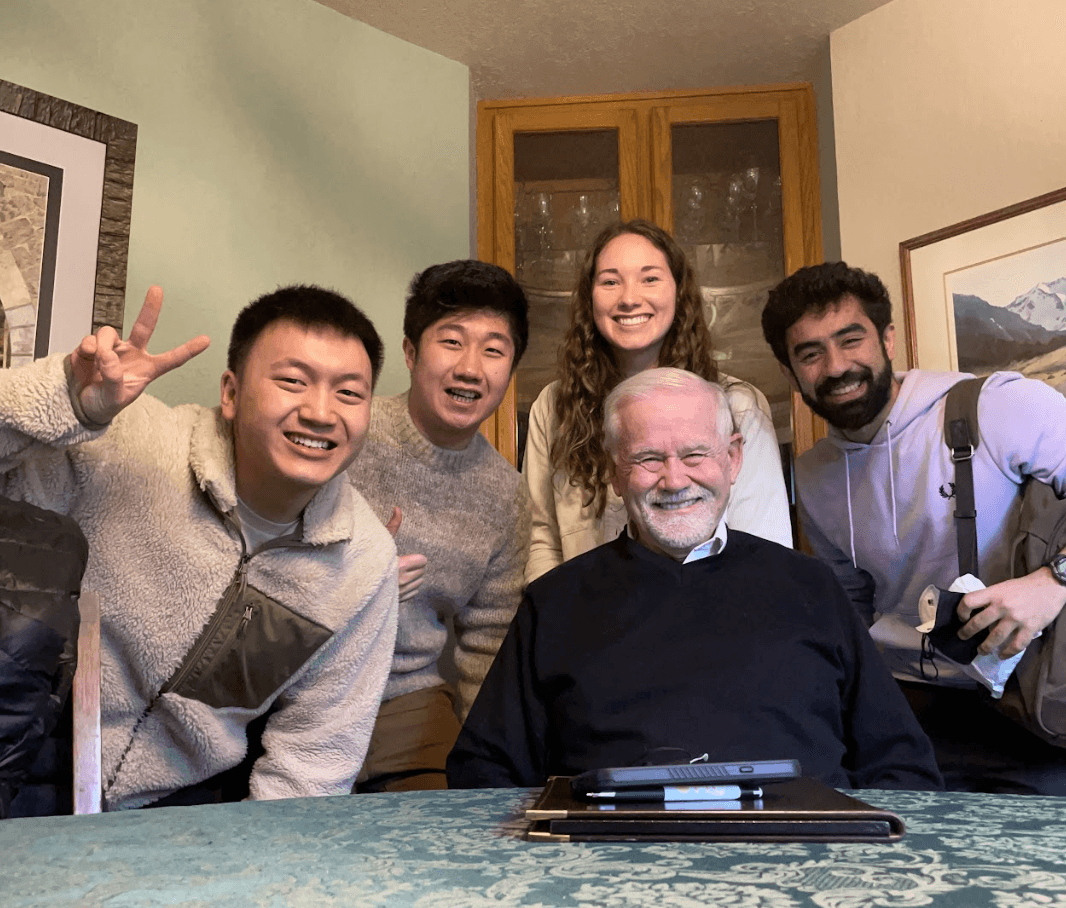Taisk
A task management AI system that helps people with cognitive disability in managing their schedules and tasks to reduce cognitive load.
/Accessibiltiy Design +
Co-Design
TIMELINE
8 weeks
ROLES
Lead Product Designer
UX Researcher
Prototyper
ADVISOR
Sarah Coppola
Sourojit Ghosh
TEAM
3 Designers
1 Researcher
OVERVIEW
Our group assisted an engaged community member who is dealing with PVC-related cognitive difficulties in handling his weekly tasks and meeting responsibilities. Overall the course of 8 weeks, we created an AI-powered work management solution that reduces the cognitive load associated with PVC. In this process, we used on-site observation, user interviews, co-design meetings, and user testing sessions to enhance our design and assure its effectiveness.
MY ROLE
As the UX designer on the team, I was responsible for:
Co-structuring study plan for user research
Conducting on-site observation
Co-moderating all user interviews and co-design sessions
Leading the design development process, which includes creating wireframes, sketching low-fi prototypes, making decisions to guide design direction, designing interfaces, and creating a video prototype
Background
In an Accessibility and Inclusive Design course, our group conducted a participatory design project with a participant dealing with mobility challenges resulting from the loss of his feet's bottoms due to sepsis.
Additionally, he grappled with premature ventricular contractions (PVCs) that affected his cognitive function, compounded by age-related cognitive decline, resulting in memory difficulties.
Hypothesis
Based on what we know about our participant's abilities, we assumed that our participant has many underserved needs. Primarily, we assumed that the most significant difficulties he faced were primarily due to his physical disability and reliance on a wheelchair for mobility.
We also assumed that, because our participant has a variety of disabilities, he requires constant assistance from his family and friends to perform daily activities, and that his relationships with others are harmed as a result of his disabilities.
Introductory meeting
To start the research, the team decided to do an introductory meeting with our participant to explain our design objectives and learn about how our participant describes his disabilities in his own language in order to implement an inclusive design process.
We also used this opportunity to explain to our participant what his participation would entail so that we could ensure that the participant is comfortable participating and gives us permission to document the process.
Disclaimer: All photos and videos in this case study were taken with participants' consent.
Interview & On-site Observation
To validate our assumptions and better understand the challenges that our participant faced, the team decided to visit the participant's house and conduct a semi-structured interview with our participant.
During this process, I was responsible for planning the session guide, co-moderating the interview, observing participant's behavior, and documenting.
Primary Research Goal: learn about our participants' daily lives and identify potential project areas of focus.
Method Rationale: allows us to validate our assumptions and efficiently understand the problem space by taking a close look at the participant's experiences and challenges.
Hypothesis: our participant faced a lot of challenges that are associated with his physical disability, and he is unfamiliar with technology due to his age.
My teammate and I conducted the interview at our participant's house
Key Findings
Even though our participant has physical challenges, he cares more about not missing "surprises" in his schedule
The participant relies on verbal reminders due to his impaired memory retention
The participant was familiar with technology
The participant wants to digitize his schedule and tasks
Family plays an important role in the participant's life
The participant desires to gain a sense of independence
Design Challenge
How might we help people with PVC in keeping track of their schedules and tasks so they can be prepared for their events without surprises?
Ideation & Co-design
Overall, the team ideated 20+ ideas and put them into categories.
My ideation sketches
We first categorized all of our ideas
Instead of narrowing down the ideas by ourself, the team decided to conduct a co-design session with our participant to include his feedback in our design decisions.
The concept
After our co-design session, we decided design an AI-based task management system that'd keep track of our participant's upcoming events and tasks.
We also decided to use dinner tabletop as the form of our design because it is the most accessible area in our participant's house.
During the prototyping process, I created initial wireframes and sketched low-fi prototype. I also led the process of creating the mid-fi prototype and recommended my team to use video prototype as a way to visually demonstrate the experience and interactions.
My teammates and I trying to flesh out the interactions on a tabletop
usability testing
To access if our design addressed our participant's needs , we conducted a usability testing session with him and gathered some feedback for future iteration.
Throughout this process, I was in responsible for co-structuring the usability session, co-moderating the interview, and documenting the participants' reactions and confusions that we need to address in the future.
My teammate showcasing our video prototype
I co-moderated the session and asked follow up questions
Key findings
Icons without labels caused confusion
Family members should be included in the design
Feedback over simplicity
Accuracy concerns can arise when it comes to AI
Consider "search" as an important feature for better navigation
design impact
Overall, the participant was very satisfied with our design solution. More specifically, the participant indicated that:
Our design has potential to simplify and reduce cognitive load in task scheduling and management for users.
Our design addresses the needs that our participant expressed and communicated.
Our design includes and assimilates the suggested iterations to make this a well-rounded product that addresses the intersectionality of participant’s challenges.
Generalizability
My teammate explaining how our design could be used in different ways
Our design initially focused on one participant, but we follow Microsoft's Inclusive Design Principles of "Solve for One, Extend to Many." Our designs may benefit seniors and people with ADHD, Dyslexia, and Dysgraphia.
However, our product is not comprehensive and requires adaptation and inclusion. We may fail to simplify task management for all users. To address communities we are currently unable to cater to, another co-design process and starting certain aspects from scratch may be necessary for a successful product.
What I would do differently…
Skip the ice-breaker if you've already talked with the participant
Conduct "build your own" method earlier during the design process
If we had more time, I'd sketch the prototype right after co-design session
I'd like to conduct additional research and iterate on our current design if we had more time and money.
What I learned
In-person meetings were extremely effective for co-design
Phone calls sometimes work really well when it comes to asking follow-up questions
Sketching low-fi prototypes aren't always the way to go, especially for co-design
Designing for accessibility does not always imply designing for physical disability
When it comes to accessibility and inclusive design, co-design and ability-based design are good approaches.
Acknowledgement
I'd like to thank all of my teammates and the faculty for providing constructive feedback that allowed us to progress. I'd also like to thank our participants in particular for their willingness to participate in our project and for their constant support. I couldn't have done it without them <3.
My team (left to right): Larry Tian, Dave Cai, Mary Catherine Meno, Our participant, Ribhav Dihgra

